18.02.2015
Award-Reckoning Rack
Congratulations from Team SVI to smart home technology specialist Cyberhome...
Luxury Homes Demand Integrated Automation and AV Home technology always evolves at a fast pace; and the last few years have been no exception.
For luxury homes it is no longer acceptable to have separate systems for lighting, heating, security and entertainment/AV. Homeowners are demanding the ease of use that comes from having all the different technology controlled through a single easy-to-use interface; and this integration also opens the door to home automation. Cyberhomes has been integrating home technology for over ten years and designed and installed a number of award winning solutions.
Fully integrated home automation is growing in popularity and it is important for designers and specifiers to understand the opportunities, as well as how to accommodate it within building design. Andy Mack, Director of smart homes technology specialists Cyberhomes, explains. Homeowners seek a flexible, user-friendly approach to control provided by the latest intuitive software, operated by touch-screen controllers and occupiers’ smart phones.
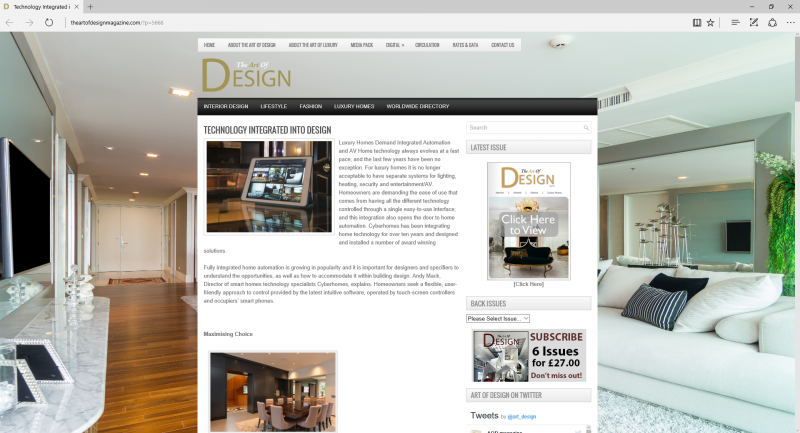
Discreet ceiling speakers in any rooms and external speakers can be organised into audio zones, each providing music and sound selected from the central AV system.
Similarly, video content from multiple, centralised sources—such as Sky, Virgin TiVo and Apple TV boxes, Blu-ray discs and movie servers—can be distributed to TVs located anywhere in the house. Systems can include a music player for each individual member of the family to enjoy their specific music collection and streaming services in any room.
Multi-room audio can be delivered by discreet in-wall or in-ceiling speakers.
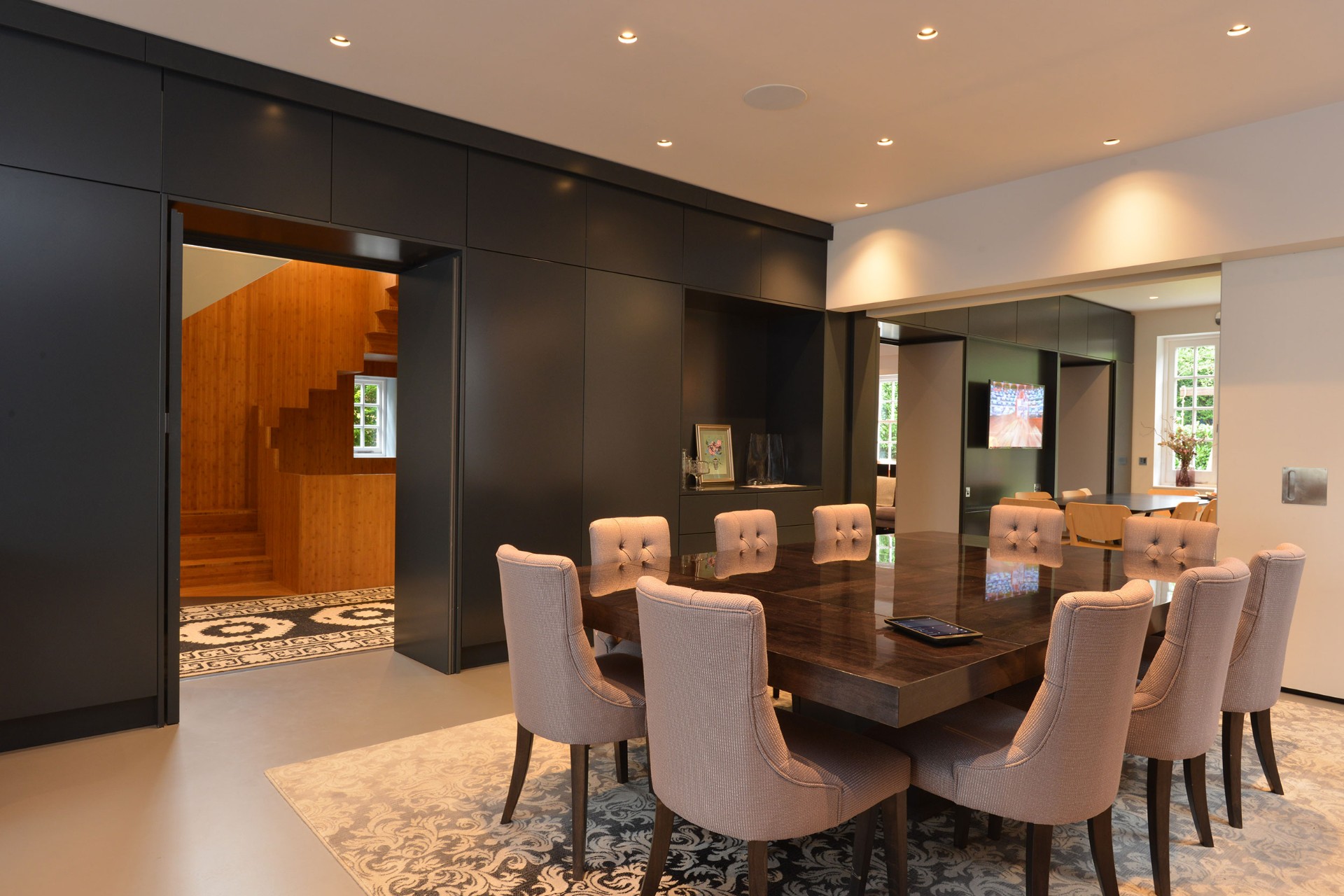
While dedicated cinema rooms are still called for in larger homes, very often a single room has to work both as a living space and a high-specification home cinema with immersive sound.
Here, at the touch of a button, a projector can descend from the ceiling, a screen lowers in front of the TV, the lights dim and blinds close, creating the ultimate home cinema experience with stunning picture quality and surround sound. Speakers can be in-wall or hidden behind ‘acoustically-transparent’ fabric panels and most of the equipment located in a plant room away from the living spaces, to minimise the impact on interior design.
Cyberhomes won the 2016 CEDIA ‘Best Home Cinema over £100,000’ for this Wimbledon cinema room.
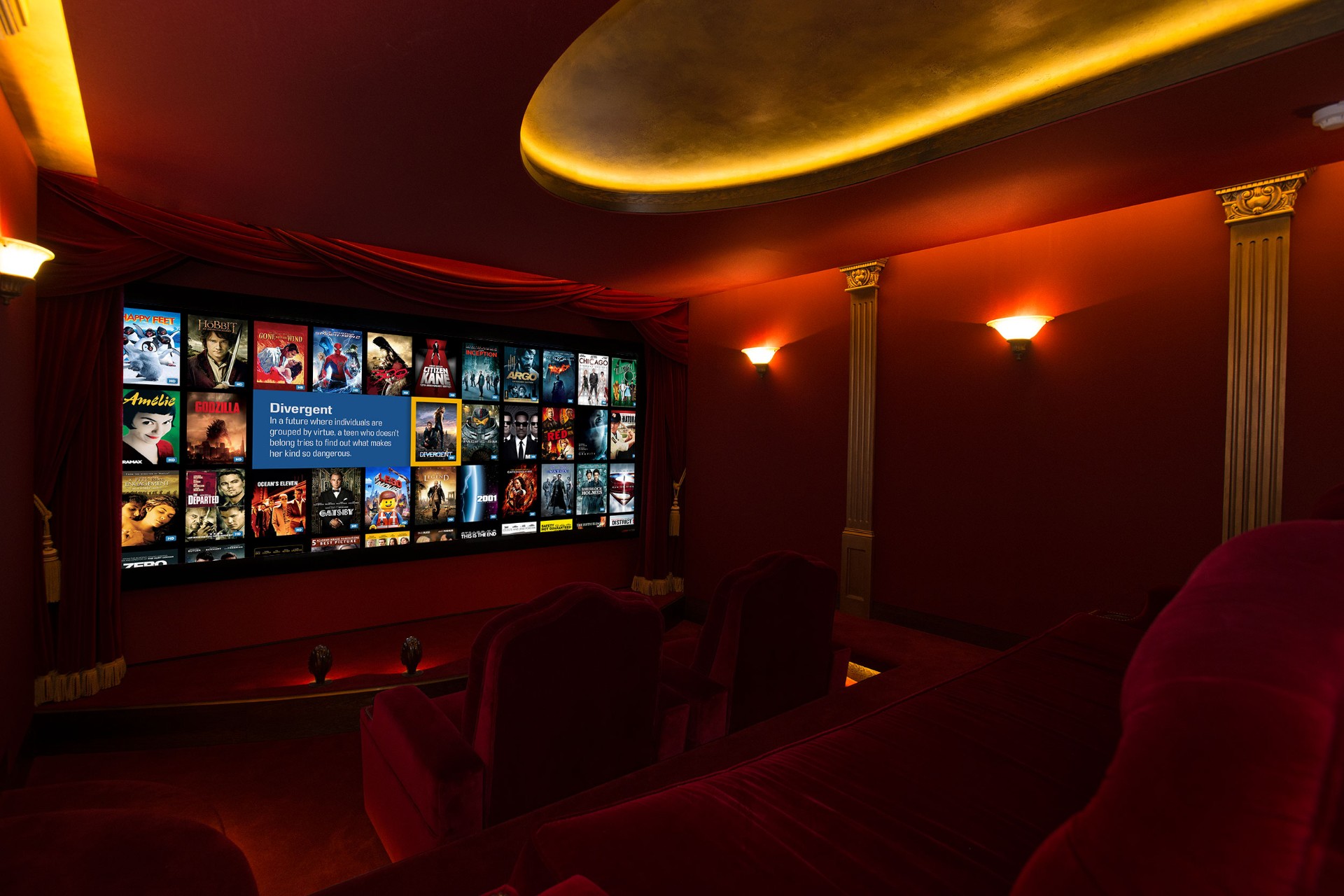
Every light in and around a house can be dimmed or switched on and off with these devices, and using discreet wall panels replacing conventional switches.
Unlike traditional wiring, each circuit is wired back to the dimmer pack, with a separate cable for controls. Pre-set scenes can be created, perhaps involving automated blinds or curtains, and the latest LED lighting enables a greater use of colour whilst making significant energy savings. Additionally, all the lights in a house can be turned off with a single button or holiday mode selected, creating the impression that the house is occupied.
Smart technology allows discreet CCTV cameras and door or gate entry systems to display on any of the control panels throughout the house or on smart phones including when away from home. Owners can also check and adjust heating, lighting and other functions remotely. Intruder alarm systems can be integrated with home automation, allowing additional actions to be triggered automatically. For example, by arming the intruder alarm, lights can automatically turn off, vacation mode occupancy simulation started and heating reduced. When the alarm is disarmed, an entry lighting scene automatically activates and the heating returns to comfort levels. Whilst the system is unarmed, security sensors can be used as occupancy detectors, for example turning lights off and reducing heating levels if rooms are unoccupied for a length of time.
Lighting control allows different moods and scenes to be quickly selected.
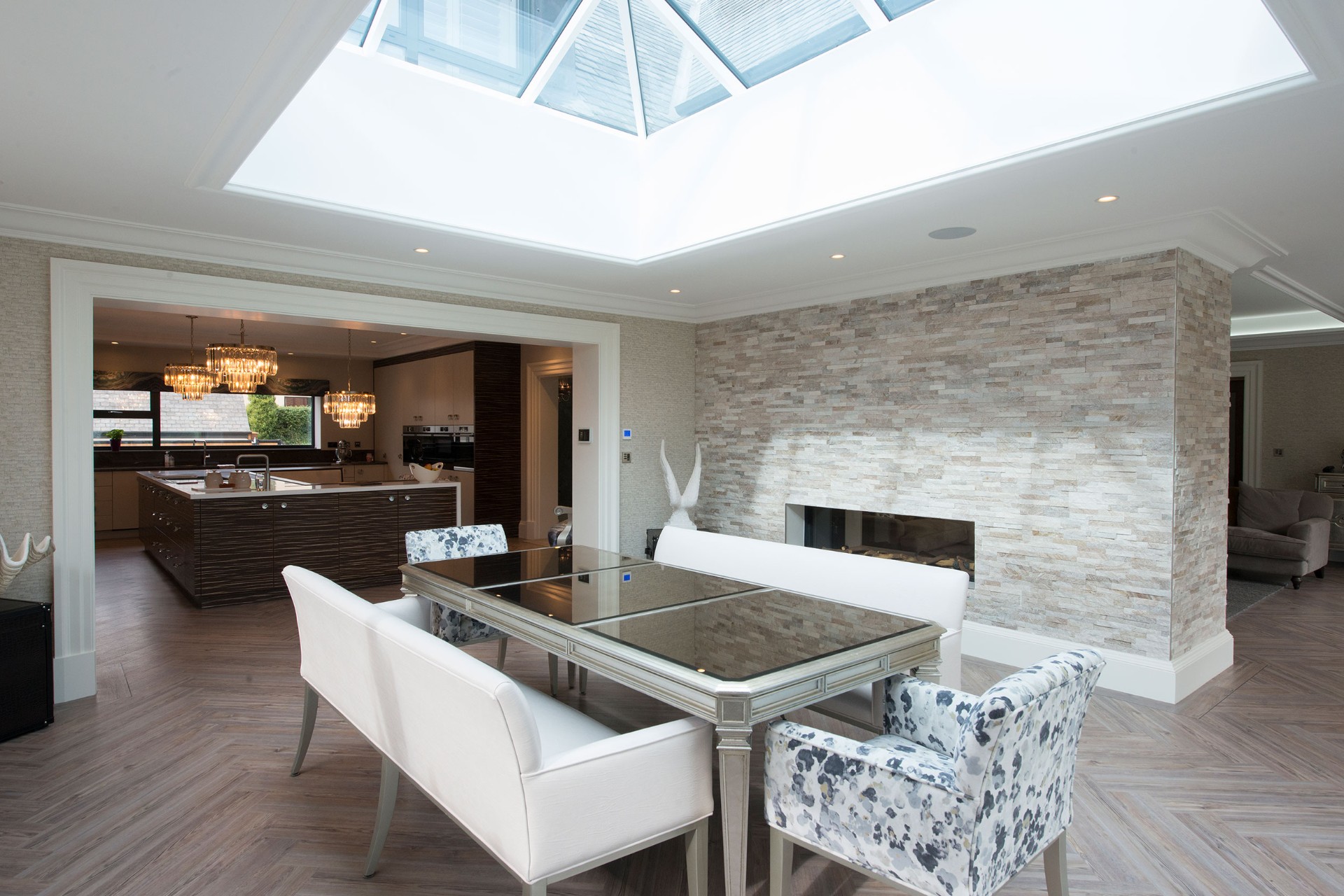
Today’s clients are keen to maximise the opportunities presented by new smart homes technology but often with as little on show as possible, minimising ‘wall clutter’.
Close liaison with interior designers and architects is therefore key to optimising best performance and visual design. And smart homes specialists should be involved in building projects from the start, working alongside architects, developers, interior designers and M&E consultants to integrate the system with the overall building design and performance. This will also ensure that accommodation of the extensive cabling needed, provision of a suitable plant room and minimisation of visual impact from equipment are all effectively catered for.
Wireless networks for fixed equipment are generally not reliable or fast enough, and suffer from ’dead spots’ as well as interference from other electrical items and the foil backing now common on plasterboard.
Wireless is recommended only for devices that need to be handheld or portable such as remote controls, smart phones and tablets. A structured cabling infrastructure based on ‘star wiring’ layouts—as opposed to ‘daisy chaining’—is key to consistent quality, flexibility and future-proofing of home automation systems. For reliability and long-term performance the necessary racks of AV equipment should be built and tested, and all the wiring looms created in a controlled environment off-site.
CCTV cameras can be viewed on a smartphone or tablet wherever you have in internet connection.
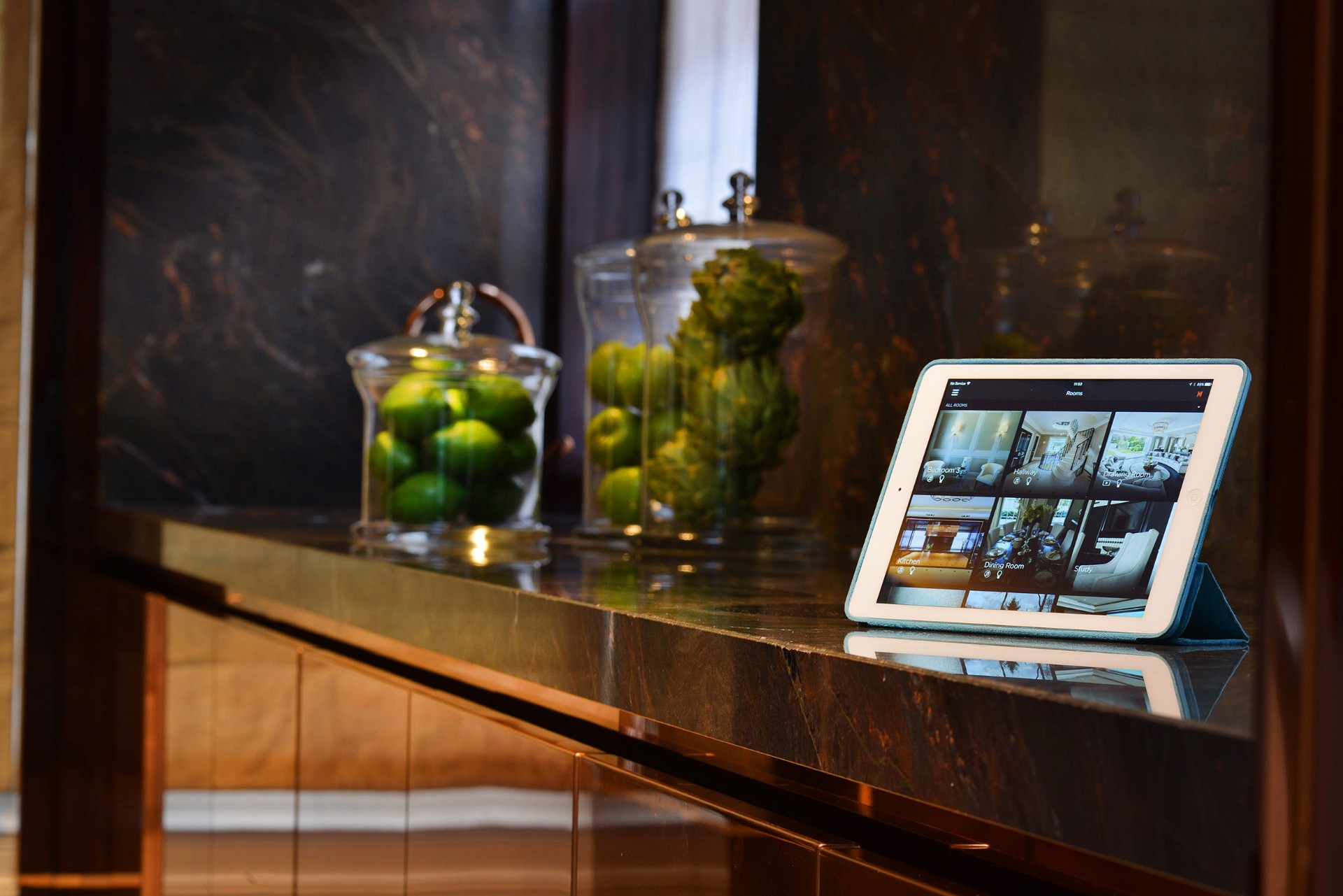
As well as providing a consistent user interface across all systems, integrating technology also allows new automation features to be offered.
For example, the windows sensors for the intruder alarm can also be used to detect if a window is opened by the homeowner, and automatically turn down the heating in that room. With the range of sensors and actuators now available, the automation that can be programmed into a system is often limited only by imagination!
A BIID and RIBA accredited CPD ‘Designing Integrated Future-Ready Homes’ is available that covers the concepts of smart home technologies and highlights some of the potential pitfalls, which Cyberhomes presents on behalf of the trade body CEDIA. If you’re looking to install integrated technology into your latest luxury home project call Jim at Cyberhomes on 0333 344 3718 and take a look at some of our other projects.